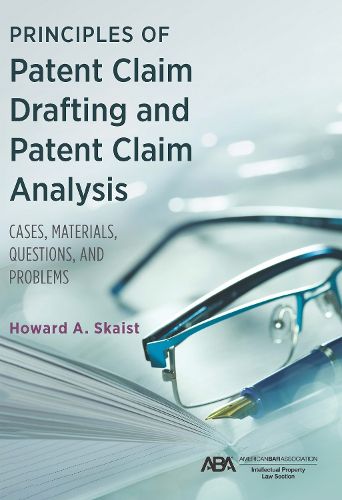Readings Newsletter
Become a Readings Member to make your shopping experience even easier.
Sign in or sign up for free!
You’re not far away from qualifying for FREE standard shipping within Australia
You’ve qualified for FREE standard shipping within Australia
The cart is loading…






Principles of Patent Claim Drafting and Patent Claim Analysis: Cases, Material, Questions, and Problems is unique in the field due to its logical organization that introduces and presents fundamental principles of patent claim drafting. This casebook addresses key doctrines of patent law that would be taught in a patent law course, but in a manner that departs from the traditional order of most patent law casebooks and/or patent law courses. It addresses common patent claim drafting concerns and/or pitfalls, offering invaluable knowledge drawn from experience.
Examples of important topics that the casebook covers, through the relevant statutes, regulations, caselaw and other materials, include: principles for selection of patent claim terminology to enhance clarity and scope; how to avoid patent ineligibility; how to handle the risks associated with 112(f) when drafting functional claims; how to avoid patent claim indefiniteness; how to avoid divided infringement; and strategies and tactics to reduce design around potential, strengthen patent infringement detection and maximize potential damages.
The casebook, consequently, covers a host of patent law considerations and doctrines that have the potential to affect the drafting of patent claims. The book highlights key principles using bolded red text in the introduction of the section of the book intended to teach that principle.
$9.00 standard shipping within Australia
FREE standard shipping within Australia for orders over $100.00
Express & International shipping calculated at checkout
Principles of Patent Claim Drafting and Patent Claim Analysis: Cases, Material, Questions, and Problems is unique in the field due to its logical organization that introduces and presents fundamental principles of patent claim drafting. This casebook addresses key doctrines of patent law that would be taught in a patent law course, but in a manner that departs from the traditional order of most patent law casebooks and/or patent law courses. It addresses common patent claim drafting concerns and/or pitfalls, offering invaluable knowledge drawn from experience.
Examples of important topics that the casebook covers, through the relevant statutes, regulations, caselaw and other materials, include: principles for selection of patent claim terminology to enhance clarity and scope; how to avoid patent ineligibility; how to handle the risks associated with 112(f) when drafting functional claims; how to avoid patent claim indefiniteness; how to avoid divided infringement; and strategies and tactics to reduce design around potential, strengthen patent infringement detection and maximize potential damages.
The casebook, consequently, covers a host of patent law considerations and doctrines that have the potential to affect the drafting of patent claims. The book highlights key principles using bolded red text in the introduction of the section of the book intended to teach that principle.